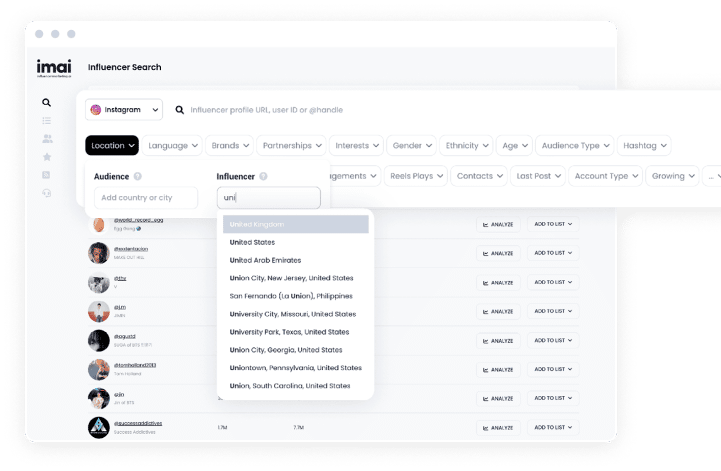Maximizing Returns: A Step-by-Step Guide to Achieving Maximum ROI on Influencer Marketing Campaigns

As a business owner, you know that it’s important to get the most return on your marketing investment. One of the most effective ways to do this is through influencer marketing campaigns, where influential people are employed to promote your products or services on social media.
With the right strategies in place, you can effectively maximize ROI on your influencer marketing campaigns, helping you get the most bang for your buck.
This article will provide a step-by-step guide to achieving maximum return on investment (ROI) from influencer marketing campaigns. It will cover different strategies to maximize returns, from developing an influencer strategy to evaluating the performance of a campaign.
It will also provide tips for optimizing overall ROI and making informed decisions about marketing investments. Readers can expect to walk away with actionable information and best practices for maximizing ROI on influencer campaigns.
Table of Contents
1. Understand Your Target Audience and Pick Influencers with Relevant Content
Understanding your target audience requires a lot of research as well as feedback from your current customers. Knowing who your target customer is and what platforms they use can help you pick the best influencers for your campaign.
You should always pick influencers with relevant content so that their message resonates with the audience that you are trying to reach. When building relationships with influencers, remember to consider the tone, aesthetics, style, and messaging of their content, as well as their past performance.
An influencer should have a strong following on the platform that your target audience is using as well as a solid engagement rate. This will ensure that the content of your campaign will reach the right people and increase its effectiveness.
2. Utilize Key Performance Indicators to Monitor Progress
Key Performance Indicators (KPIs) are a vital tool in monitoring and evaluating progress in business. They help determine how a company, team, or individual is doing in terms of meeting key objectives, and allow managers to quickly identify areas that need improvement.
KPIs should be tailored to the business, and are usually focused on areas such as productivity, customer satisfaction, and financial performance. By consistently monitoring KPIs, businesses can keep a close eye on how they are performing, identify areas of improvement, and create strategies to increase overall success.
3. Research and Identify the Right Influencer Platforms
Doing your research to identify the right influencer platforms for your advertising needs is key to success. It’s important to research each platform and consider their measurement capabilities, platform integrations, engagement levels, and customers in order to determine the best fit for your goals.
Understanding the different platforms and what they offer is the beginning of effective influencer marketing. Platforms such as YouTube, Facebook, Instagram, Twitter, and Snapchat have all become popular choices due to their various capabilities and relevance to target audiences.
Additionally, newer platforms like TikTok and Twitch provide the possibility of reaching younger generation audiences. When taking the time to do proper research and to identify the right influencer platform that meets your particular goals, it can result in a higher return on investment.
4. Set Clear Goals and Align Around Them
It is critical that organizations and teams set clear goals and align around them in order to be successful. Having a shared understanding of what needs to be achieved and how it will be achieved is crucial to any successful project.
It also helps to motivate staff members and increase productivity. Establishing SMART goals (Specific, Measurable, Attainable, Relevant, Time-bound) can provide a clear path to the desired outcome, allowing team members to monitor their progress and make necessary adjustments along the way.
Aligning team members around a unified goal can also increase collaboration and strengthen teamwork, as everyone is working towards the same cause. Setting clear goals and aligning around them can ensure that the desired results are achieved and make an organization more productive.
5. Leverage Interactive Content and Giveaways
Leveraging interactive content and giveaways is a fantastic way for businesses to engage with an online audience. By using giveaways and quizzes, polls, contests, surveys and other interactive content, businesses can draw in an audience and encourage engagement with their brand.
Not only do these activities help to build customer loyalty, but they also help to generate leads, as customers who participate in interactive content are more likely to purchase a company’s products and services. Moreover, interactive content is a great way to gather customer data that can then be used to design targeted customer retention campaigns.
As such, using interactive content and giveaways is a great way for businesses to connect with an audience, increase brand awareness and make valuable customer connections.
6. Introduce Unique Ways to Streamline Campaigns
Streamlining campaigns can be an effective way to maximize efficiency and minimize waste of resources. One strategy to streamline campaigns is to reduce the number of tasks needed to complete the campaign.
This can be done by eliminating unnecessary steps or tasks, or through combining steps to speed up the process. Additionally, introducing automation can be a great way to improve productivity and efficiency, as automation can eliminate the need for allocating labor to certain tasks.
Finally, using analytics, reports, and tracking to better assess the results and progress of campaigns can also streamline a campaign by allowing for more effective decision-making.
7. Analyze Performance Metrics to Adjust Campaigns
Performance metrics is an important tool used to measure the success of marketing campaigns and their effectiveness when trying to reach certain goals. Analyzing these metrics can help marketers identify weaknesses in the campaign and adjust for better results.
Performance metrics can include anything from the average number of page impressions to the click rates of email campaigns. By reviewing the data and understanding what the metrics are telling them, marketers can change their strategies and reallocate resources to ensure that their campaigns reach the maximum potential.
When tracking the performance metrics of marketing campaigns, it’s important to not just look at the numbers, but to consider the context of the data in order to come to an informed decision on how to adjust the campaign.
8. Incorporate Experiential Advertising
Experiential advertising is a powerful marketing tactic that seeks to engage people through physical interactions and experiences. It centers around connecting people with a brand through meaningful activities that deliver a branded message.
Experiential advertising can be used to create long-term relationships between customers and brands. It allows brands to demonstrate their values, showcase their product or service, and deliver key messaging to a targeted audience in a highly immersive way.
By engaging with customers on an emotional level, experiential advertising can lead to higher overall brand awareness, more brand loyalty, and stronger customer relationships.
9. Invest in Video Content for Maximum Engagement
Video content is becoming increasingly popular as a tool to engage with customers. Investing in video content can have a variety of positive effects, such as enhancing customer engagement, effectively promoting your brand and products, and increasing your customer retention rates.
Producing videos that are engaging, informative, and entertaining can help you reach a wider audience, encouraging people to engage with your content more frequently. Video can also be used to communicate complex topics easily, helping to build trust between customers and your business.
By investing in video content, you can increase user engagement and drive your business to success.
10. Analyze All Aspects of the Influencers’ Audience
Analyzing all aspects of the influencers’ audience is vital when determining if an influencer is the right choice to represent a brand. Taking into account the age, location, gender, and interests of the influencer’s audience provides valuable insight into the type of people they reach and their potential interest in the brand and its product or service.
Knowing this information can help ensure that the influencer is the right fit for a particular brand, helping maximize the effectiveness of the influencer’s reach and ultimately improving the success of the campaign.
11. Follow Best Practices to Maintain High Quality Content
Creating high quality content takes time and effort and requires following best practices to make sure that you have great results. Best practices for maintaining high quality content include conducting careful research, focusing on writing for readability, using keywords strategically, using visuals to enhance your content, and making sure that it is optimized for different platforms.
Additionally, you should use a content management system and consider using multiple sources to make sure that your content is accurate and up to date. Finally, don’t forget to proofread and edit your content to make sure it is error-free and engaging for your audience.
By following these practices, you can help ensure that you have high quality content for your readers.
12. Create and Utilize Influencer Scorecards to Track Results
Creating an influencer scorecard is an effective way to track the performance of influencers. A scorecard contains an overview of the key performance indicators (KPIs) that will be used to measure the success of an influencer’s campaigns.
It should include objectives as well as a variety of quantitative and qualitative metrics such as followers, engagement, reach, sentiment, sentiment scores, sales, etc. By tracking the progress of influencers with a scorecard, it allows brands to see which strategies are truly successful or need some tweaking.
The scorecard also helps brands compare data from a number of campaigns and influencers, so that they can better determine the impact of a particular campaign. Utilizing an influencer scorecard provides brands with valuable insight into the performance of their campaigns and helps them make data-driven decisions for future campaigns.
Maximizing ROI on Influencer Marketing Campaigns with IMAI
IMAI, our end-to-end influencer marketing platform, can help maximize ROI on influencer marketing campaigns by ensuring that every step of the marketing process is properly managed. Our powerful analytics provide real-time insights into performance, allowing marketers to quickly identify influencers who deliver the best results.
Our comprehensive approach also includes a comprehensive dashboard and reporting tools to ensure that every campaign is optimized for maximum ROI. Additionally, our automated social media platform solves the challenge of keeping up with the ever-changing landscape of influencers, while providing accurate and up-to-date data on the influencers working best within a brand’s marketing campaigns.
With our deep understanding of the influencer marketing industry and proprietary algorithms, IMAI is the perfect partner to help maximize ROI on influencer marketing campaigns.

Closing Remarks
As with any marketing campaign, the key to maximizing ROI on influencer marketing campaigns is to thoroughly research and prepare. You need to understand which influencers are right for your target audience, develop a strategy that resonates with them, and assemble an efficient team to execute the campaign.
Once you have a well-defined plan, you’ll be well on your way to maximizing your return from influencer marketing campaigns. Good luck!
















 "A Must-Have Tool for Influencer Marketing"
"A Must-Have Tool for Influencer Marketing"
 "Game changer for Social Commerce and Brand Awareness"
"Game changer for Social Commerce and Brand Awareness"


